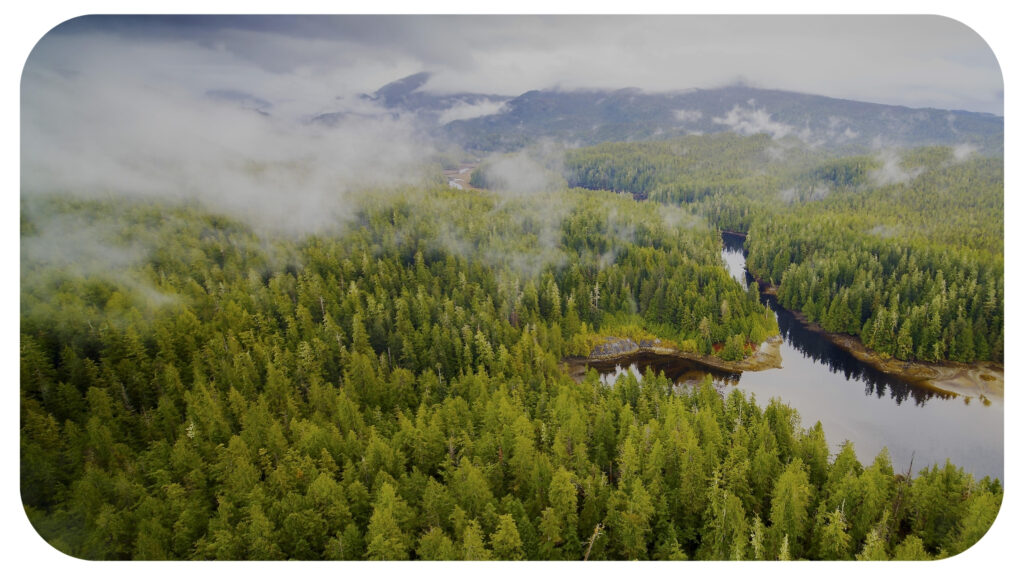Visualizing Biodiversity: Ian McAllister on Wildlife Photography and Documentary Filmmaking
This post was last updated on April 8th, 2025

Photo by: Ian McAllister
Wildlife photography and documentary filmmaking are potent mediums in the realm of conservation. Capturing the raw beauty of nature and the intricate lives of its inhabitants, these visual arts serve a dual purpose—to mesmerize and advocate. In the vast landscapes they depict and the intimate moments they freeze in time, these forms of media transcend mere entertainment.
They become crucial tools in raising awareness about the urgent need for wildlife preservation. At the heart of every breathtaking image or compelling documentary lies a narrative of struggle and resilience, of habitats threatened and species on the brink.
Through the lens of a camera or the frame of a film, we glimpse into worlds both familiar and foreign, drawing us closer to the fragile ecosystems we share this planet with. Documentary filmmaker and wildlife photographer Ian McAllister explores the profound impact of wildlife photography and documentary filmmaking on conservation efforts.
The Power of Visual Storytelling
In the realm of wildlife preservation, visual media is a captivating force, drawing audiences into the heart of conservation efforts. The power of images and videos to convey messages of urgency and hope cannot be overstated.
“When a stunning photograph freezes a fleeting moment in nature, or a documentary film unfolds the plight of endangered species, viewers are not merely spectators—they become witnesses to the fragile beauty of our planet,” says Ian McAllister. “At its core, visual storytelling in wildlife preservation harnesses the emotive impact of visuals to evoke empathy and drive action.”
Visual storytelling transcends language barriers, speaking directly to the shared sense of wonder and responsibility we hold for the natural world. Through carefully crafted compositions and expertly narrated sequences, these visual narratives immerse audiences in the challenges faced by wildlife and the tireless efforts of conservationists.
As viewers connect with the breathtaking landscapes and charismatic creatures on screen, they are invited into a deeper understanding of the interconnectedness of all life forms. This intersection of artistry and advocacy forms the cornerstone of how wildlife photography and documentary filmmaking continue to shape perceptions and drive conservation conversations forward.
Wildlife Photography: Capturing Moments in Time
The art of wildlife photography traces its roots back through history, evolving alongside technological advancements and a growing appreciation for the natural world. From the pioneering works of early explorers to the modern-day lens of conservationists, this medium has captured the essence of wildlife in its purest form.
Techniques in wildlife photography have progressed significantly, driven by innovations in camera technology that allow for less invasive documentation of wildlife. Remote camera traps, UAVs, and other wireless technology can remotely capture previously undocumented wildlife behavior that benefits both the scientific community and conservationists alike.
Ian McAllister notes, “Whether it’s freezing the graceful flight of a bird or the tender interaction between mother and offspring, these images transport viewers to the heart of nature’s wonders.”
Beyond their technical prowess, wildlife photographers play a pivotal role as advocates for conservation. Through their lenses, they not only document the beauty of wildlife but also shed light on the challenges they face. Each photograph serves as a testament to the delicate balance of ecosystems and the urgent need for greater environmental protection. Sharing visual stories with the world, these photographers ignite passion and inspire action, making them integral partners in the ongoing battle to protect our planet’s biodiversity.
Documentary Filmmaking: Bringing Conservation Narratives to Life
The rise of wildlife documentaries marks a significant milestone in conservation communication. These films go beyond mere entertainment, serving as powerful vehicles for education and advocacy. Through stunning visuals and compelling narratives, they bring the challenges and triumphs of conservation efforts into the living rooms of audiences worldwide.
“Behind each captivating documentary lies a complex and often challenging filmmaking process,” says McAllister.
Filmmakers venture into remote corners of the globe, facing unpredictable weather and elusive wildlife, all to capture the essence of our planet’s biodiversity. With state-of-the-art equipment and a keen eye for storytelling, they weave together footage that transports viewers into the heart of conservation struggles.
The impact of these documentaries extends far beyond the screen, influencing public perception and policy-making. By shedding light on issues such as habitat loss, poaching, and climate change, filmmakers spark conversations and inspire action. Viewers are not only informed but also empowered to become stewards of the environment. In this way, documentaries serve as catalysts for change, bridging the gap between awareness and tangible efforts to protect our natural world.
Challenges and Ethical Considerations
Wildlife photography and documentary filmmaking come with their share of formidable challenges, both environmental and logistical. Photographers and filmmakers often find themselves navigating remote and inhospitable terrains, braving harsh weather conditions and rugged landscapes to capture the essence of wildlife. The unpredictability of nature adds another layer of complexity. In an unscripted setting, being prepared to document the unexpected and build an entirely new narrative around it is the norm rather than the exception.
Ethical considerations loom large in the world of wildlife photography and filmmaking. The quest for captivating imagery must be tempered with a deep sense of responsibility towards the subjects and their habitats. This includes respecting wildlife’s natural behaviors and avoiding any actions that may cause distress or harm. Additionally, issues such as habitat disturbance and invasive techniques must be carefully weighed against the desire to create compelling narratives.
Balancing the need for stunning visuals with ethical standards is an ongoing challenge for photographers and filmmakers. It requires a delicate dance between artistic vision and conservation ethics. By employing non-intrusive methods and adhering to ethical guidelines, professionals in this field strive to create impactful media while ensuring the well-being of the wildlife they aim to portray. In doing so, they uphold a commitment to both artistic integrity and wildlife conservation.
The Future Impact of Wildlife Photography and Documentary Filmmaking
The significance of visual media in conservation efforts cannot be overstated. As we have explored the realms of wildlife photography and documentary filmmaking, it becomes evident that these visual narratives are not just about capturing stunning images or telling compelling stories—they are about igniting passion, raising awareness, and driving action for the protection of our planet’s biodiversity.
The journey towards wildlife preservation is ongoing, and it requires a collective effort from individuals, communities, organizations, and governments worldwide. Supporting those who dedicate their lives to capturing the beauty of the natural world acts as a catalyst for change.
Recommended For You
Valentine’s Day Adventures: Unique Ideas for the Perfect Date
Most Inside
Most Inside offers high-quality recommendations and valuable updates to enhance all aspects of your life, providing premium guidance and enriching experiences.




